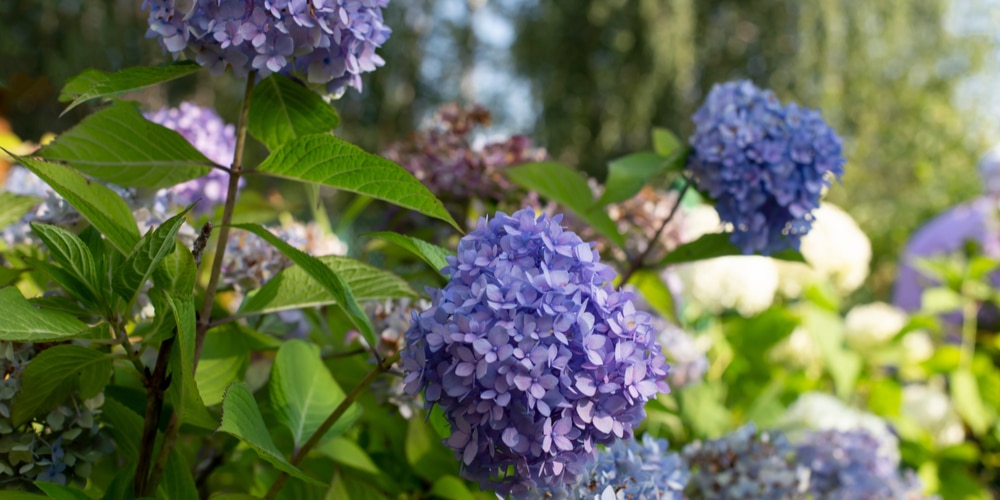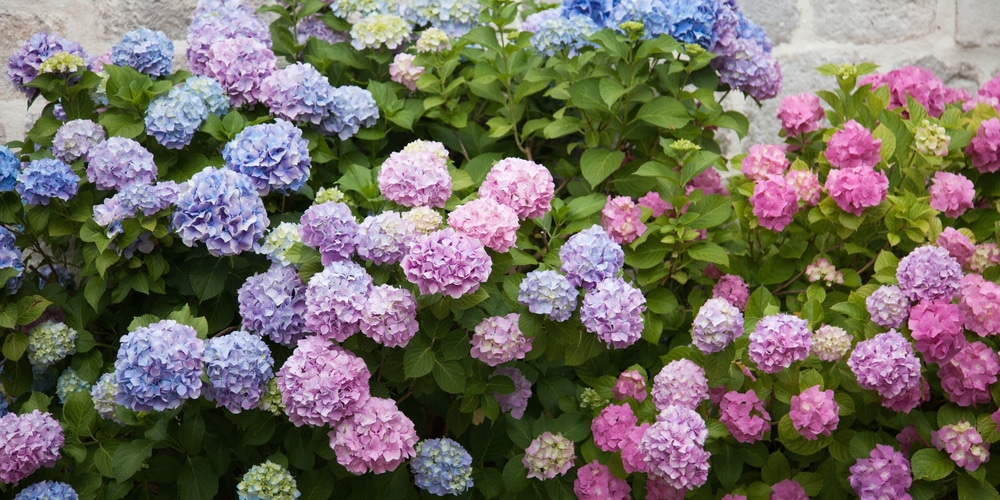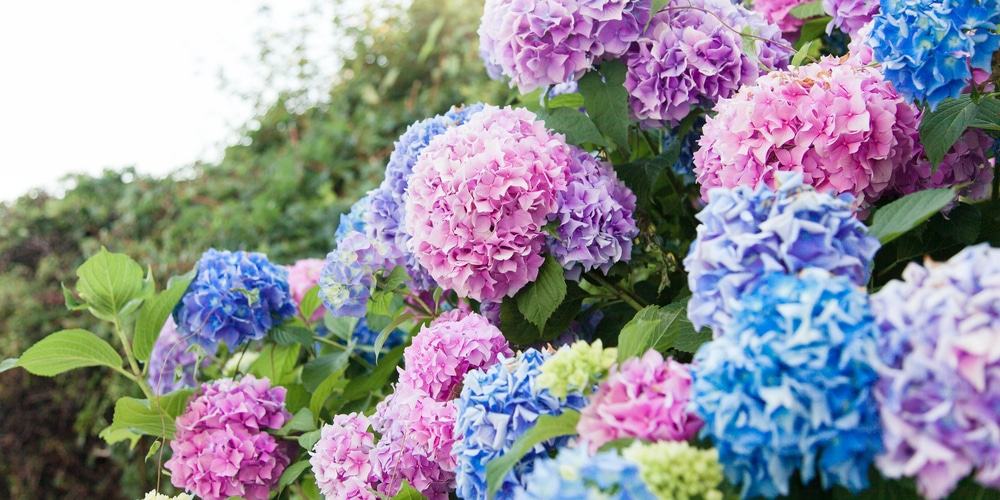The ‘Blue Sunset’ Hydrangea is a heavy bloomer, with chameleon-like flowers that change color depending on the soil pH.
| Botanical Name | Hydrangea macrophylla |
| Common Name | Bigleaf Hydrangea |
| Plant Type | Perennial |
| Flower Color | Depends on the soil’s pH |
| Size When Mature | 36 to 72 inches |
| Bloom Time | Summer |
| Sun Requirements | Partial shade, full shade |
| USDA Hardiness Zones | 6 to 9 |
| Soil PH Range | Acidic, Neutral, Alkaline |
| Soil Type | Acidic, Well-drained |
| Water Needs | High |
| Native Area | Japan |
What you Need to Know About Blue Sunset Hydrangea
The ‘Blue Sunset’ is part of the bigleaf variety, which means gardeners get continuous blooms throughout the growing season. Hydrangea macrophylla produces clusters of colorful flowers that have no scent set atop big and leafy foliage.
‘Blue Sunset’ hydrangeas sport blue flowers when the soil is acidic, and pink when alkaline or neutral. The plant thrives in part-sun to bright shade and is very easy to grow and care for. Furthermore, ‘blue sunset’ reblooms multiple times as long as you continue to fertilize throughout the growing season.
How to Care for Blue Sunset Hydrangea
Here’s everything you need to know about growing and caring for a thriving Blue Sunset Hydrangea
Light
Bigleaf Hydrangea is an anomaly in the ‘plant with big blooms’ department. While others require more than 8 hours of sun each day to perform consistently, this hydrangea is more than happy to bask under bright indirect light or stay in the shade.
While it’s true that you can expose hydrangea to direct sun for a few hours daily, the plant won’t mind if grown in a shady spot in your home.
The beauty of Blue Sunset is that you can grow it in a container. You may need to rotate it every week or so to get even growth and make sure it gets a window that gets plenty of light.
Water and Soil Needs
Hydrangea Macrophylla, like most hydrangea species, will need plenty of water throughout the growing season. It’s recommended that you do not allow the plant to have its soil completely dry out, or else hydrangea plants will wilt and their flowers may not recover.
Keep the soil consistently moist but not overly wet. You can tap the soil surface and feel it- dry means you can water it deeply, while wet means you can wait a day or two and do the soil test again.
Hydrangeas do best in acidic soil that has plenty of organic compost. The soil has to be well-drained as well.
Temperature Requirements
Blue Sunset Hydrangea can grow in zones 6 to 9, and through a range of temperatures and environments. The plant doesn’t tolerate direct sunlight well, especially the afternoon sun. During winter, deciduous varieties tend to lose their foliage and enter a state of dormancy.
The ideal range of temperature for growing hydrangeas is between 65 to 75 degrees F, or 18 to 23 degrees C.
Fertilizer
The best fertilizer to use on a Blue Sunset Hydrangea is a general, all-purpose fertilizer in stake-type, liquid or granular form.
An NPK ratio of 10-10-10 will work wonders for the nutrient-loving plant and helps produce bigger blooms. You can feed your hydrangeas in spring and after the first set of flowers are spent.
You can also supplement with aluminum sulfate to make your hydrangea flowers blue throughout the growing season. Apply an inch or two of mulch around your hydrangeas to keep the soil cool and moist.
Common Diseases
Blue Sunset plants are practically immune to common pests and insects, and their flowers attract beneficial wildlife such as butterflies. The only thing you have to worry about is root rot, which is usually caused by overwatering.
Root rot can be prevented by checking soil moisture levels before reaching for the watering can. Wait until the top inch or so is dry to the touch before you irrigate. Water more often if the days are hot and the weather is unusually warm.
Blue Sunset Hydrangea Propagation
You can multiply your Bigleaf Hydrangeas by taking cuttings in summer. Choose softwood growth and those that haven’t produced flowers in the current growing season, and cut them to about 3 to 5 inches. Plant the cuttings in a moist medium and keep them in a bright and shaded area.
Blue Sunset hydrangeas can also be propagated by division and layering, which is done by putting down a stem into soil and removing it once it grows roots (which can take several weeks).


